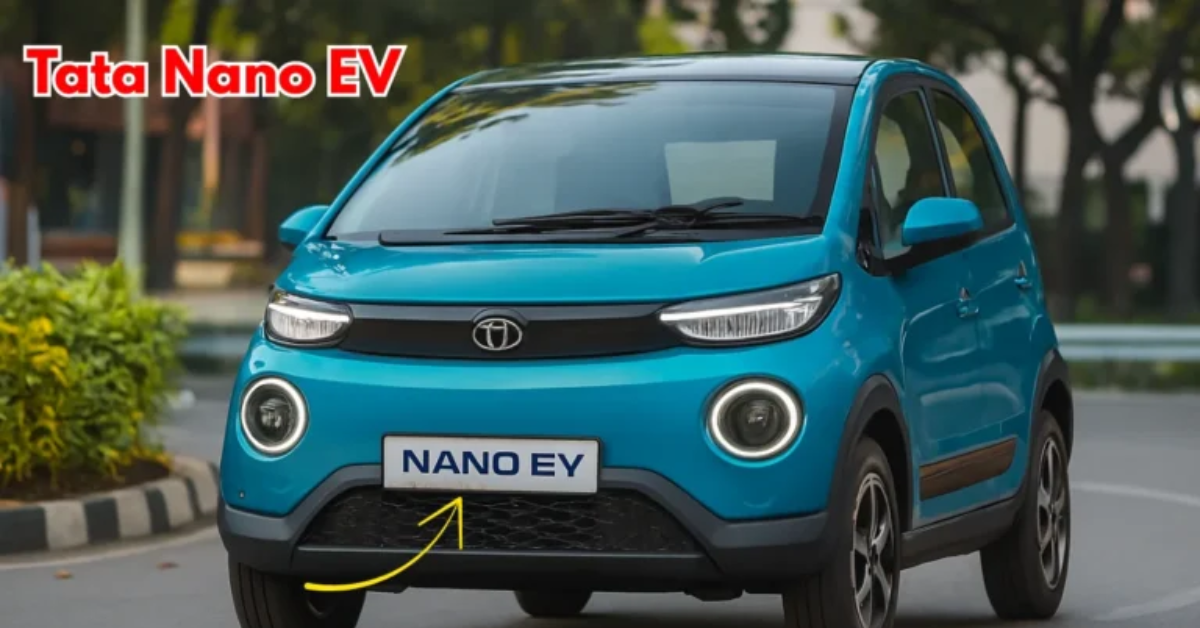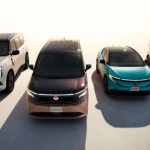Tata Motors is all set to make waves in the Indian automotive market with the reintroduction of one of its most iconic models – the Tata Nano, now electrified and upgraded for the new era. Dubbed as the “Tata Nano EV 2025“, this affordable electric vehicle (EV) is aimed at revolutionizing city mobility, especially for middle and lower-income families.
With an attractive starting price of just ₹2.5 lakh, the new Nano EV is expected to be the cheapest electric car in India while offering a driving range of 200 km, a powerful 17kWh lithium-ion battery, and modern tech features that will surprise even the most tech-savvy drivers.
🔋 A Modern Heart: 17kWh Lithium-ion Battery
At the core of the Tata Nano EV 2025 is a 17kWh battery pack, giving it an estimated range of up to 200 kilometers on a single charge. This makes it perfect for daily city commutes, small errands, and even short highway rides.
Charging is expected to be both easy and affordable:
- Standard home charging time: 6–7 hours
- Fast charging (if offered): 60–90 minutes (up to 80%)
⚡ Performance Specs – Small Car, Smart Power
Don’t be fooled by its compact dimensions. The Nano EV is designed to be:
- Quick off the line with a claimed acceleration of 0–40 km/h in just 2.77 seconds
- Top speed expected around 70–80 km/h, suitable for urban use
The lightweight frame of the Nano, now paired with an electric motor, makes the car agile, responsive, and energy-efficient.
🛠️ Design Evolution – Retaining Legacy, Adding Modernity
While Tata Motors is keeping the nostalgic “Nano” look alive, the 2025 version will get modern cosmetic updates:
- Sleeker LED headlights and taillights
- Closed front grille (common in EVs)
- Stylish dual-tone bumpers
- Fresh set of alloy wheels
- Optional sunroof and vibrant color options for the youth
🏠 Perfect Urban Commuter – Compact Yet Practical
With its small turning radius, compact size, and improved ground clearance, the Nano EV is ideal for navigating:
- Narrow Indian streets
- Congested city traffic
- Tight parking spaces
Despite its size, the car will comfortably seat 4 adults, offering a decent boot space for groceries and light luggage.
🛡️ Safety First – Even in a Budget EV
Tata has been pushing safety across its lineup. While the Nano EV will be a budget offering, expect basic safety features such as:
- Dual airbags (driver and passenger)
- ABS with EBD
- Rear parking sensors
- Seat belt reminders
- Crash safety compliance with Bharat NCAP standards
🌱 Affordable Green Mobility for the Masses
The reintroduction of the Tata Nano as an EV at just ₹2.5 lakh can be a game-changer in India’s electric mobility landscape. It aligns with the government’s push for:
- Cleaner urban air
- Affordable EV adoption
- Reduced fuel dependency
The Nano EV is poised to become the first car for many Indian families, thanks to:
- Zero tailpipe emissions
- Lower maintenance costs
- Significantly cheaper running costs than petrol vehicles (under ₹1/km)
💰 Cost Breakdown and Savings Over Time
| Category | Nano EV 2025 |
|---|---|
| Ex-showroom Price | ₹2.5 Lakh (expected) |
| Running Cost | ₹0.85 – ₹1.2 per km |
| Annual Savings | ₹25,000 – ₹40,000 (vs petrol) |
| Battery Warranty | 3–5 years (expected) |
It’s clear the Nano EV is not just affordable to buy — it will be incredibly economical to own.
📱 Tech Features – Budget-Friendly, Yet Smart
Expected features include:
- Digital instrument cluster
- Touchscreen infotainment (in top variant)
- Bluetooth/USB connectivity
- Smart charging indicator
- Mobile app support (for battery, charging, and diagnostics)
Tata may offer two to three trims, giving buyers the flexibility to choose between a basic model and a slightly premium version.
🧿 Target Buyers – Who is the Nano EV 2025 For?
The 2025 Tata Nano EV is ideal for:
- First-time car buyers
- Budget-conscious families
- College students and daily commuters
- Urban dwellers who need a compact, eco-friendly car
- People switching from 2-wheelers to 4-wheelers
🚘 Competitors and Market Positioning
Although the Tata Nano EV won’t face direct competition in its price segment, it may still be compared to:
- MG Comet EV (₹6–8 lakh)
- PMV EaS-E (₹4–5 lakh)
- Bajaj Qute (petrol/CNG)
- Low-end electric scooters (Ather, Ola S1)
However, none match the value-for-money ratio of the Nano EV in the ₹2.5 lakh segment with a 200 km range.
🏁 Final Verdict: India’s People’s EV is Here
The Tata Nano EV 2025 is more than just a relaunch — it’s a revival of a dream that started with “India’s cheapest car” and is now redefined with electric power. Tata Motors is not just bringing back nostalgia, but offering a practical solution to urban commuting, all while making electric cars accessible to the common Indian household.
Whether you’re a student, a small family, or someone wanting a clean and economical daily commuter — the Tata Nano EV is built for you.

Hello, my name is Muskan Kumari and I am an experienced Digital Marketer. I have been blogging for the last 3 years and I have special interest in SEO. Here I give you easy bikes and writes easy-to-understand reviews and news about the latest bikes, helping readers choose the best options.. My aim is to always provide you with accurate, new and useful information.










